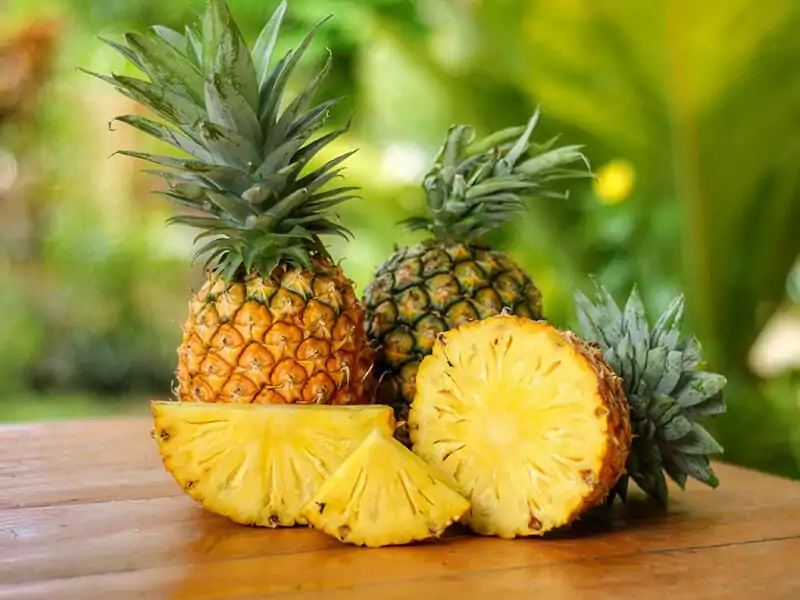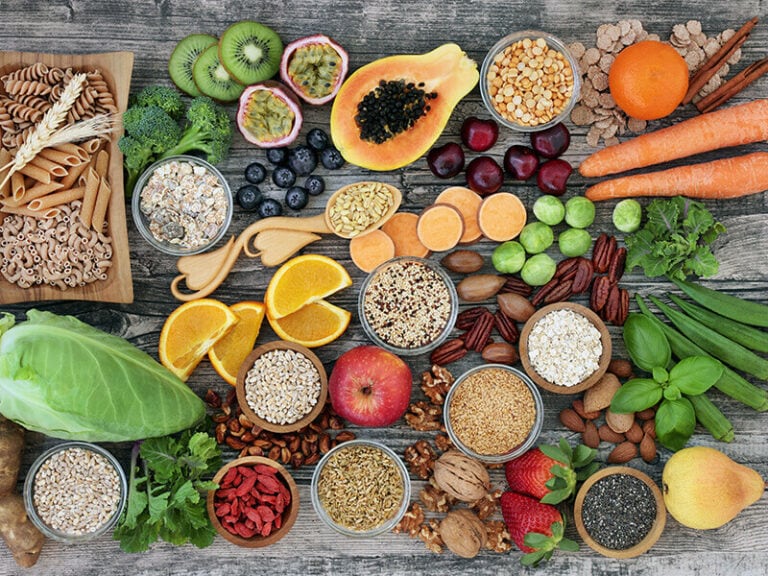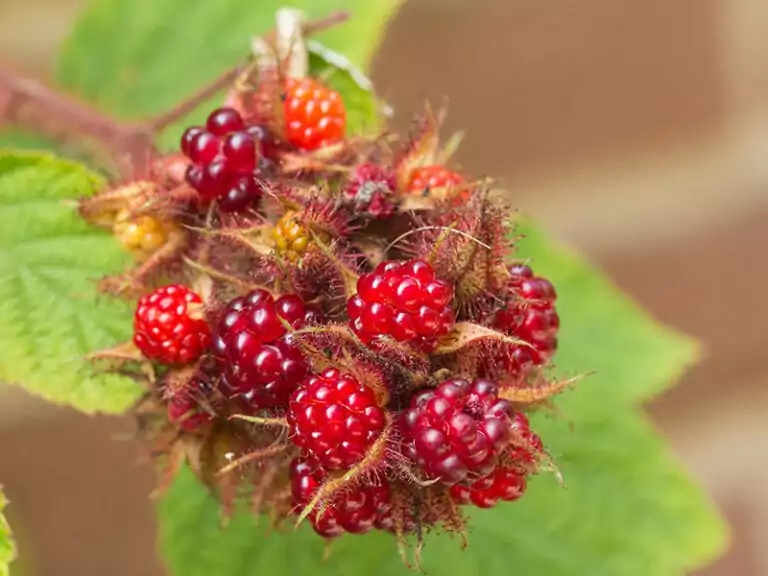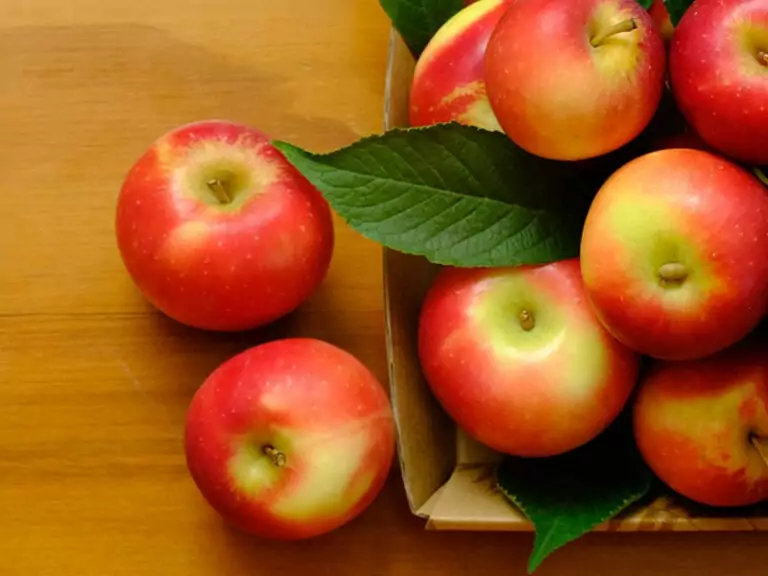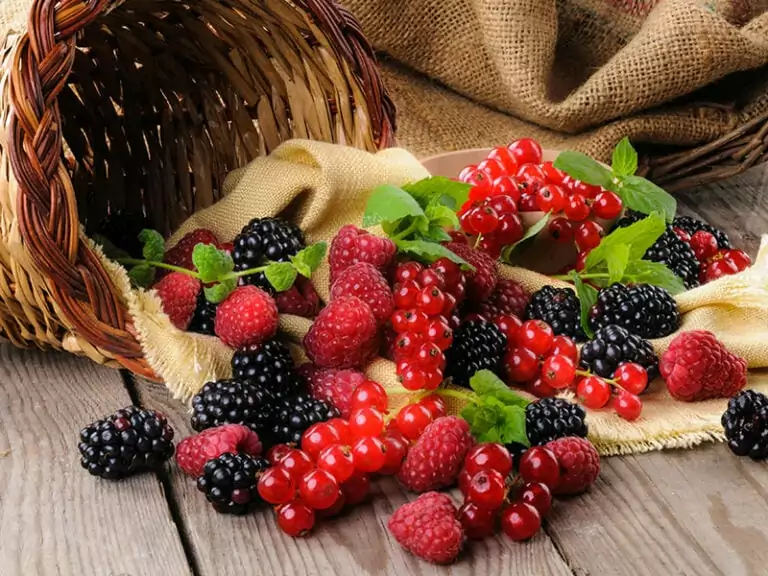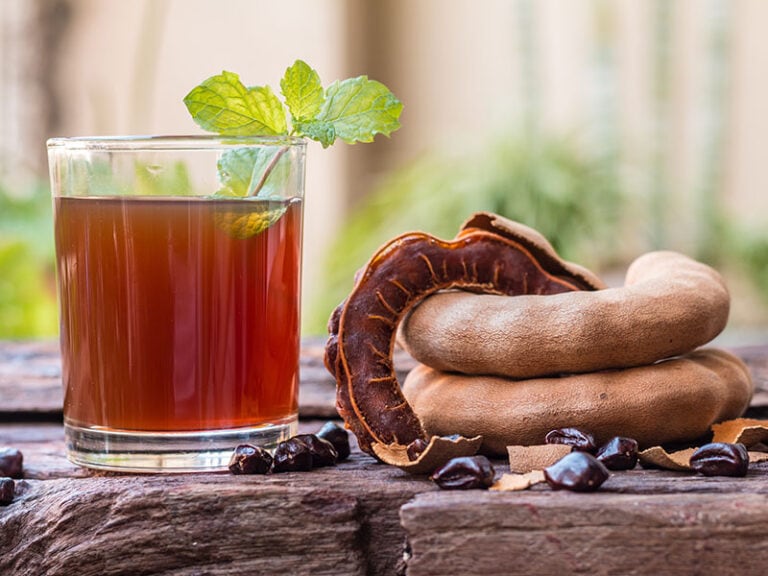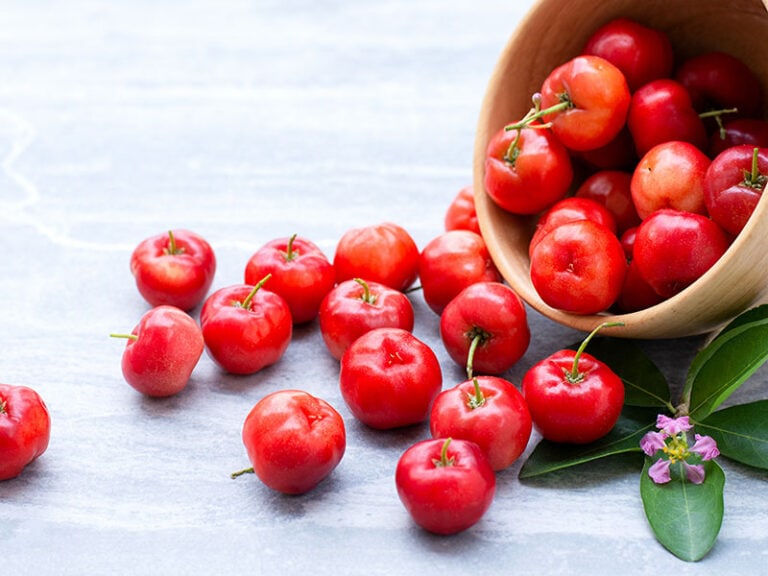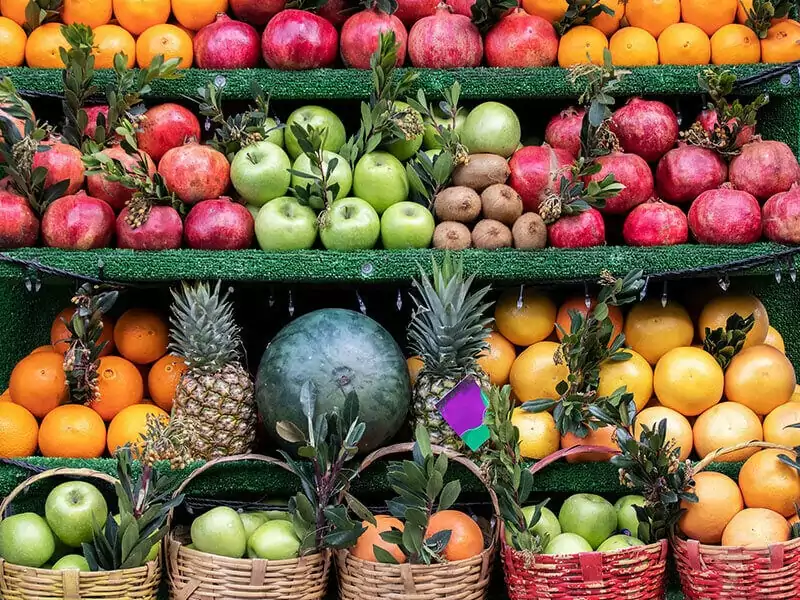
Compared to other letters, fruits and vegetables that start with Q are probably the hardest to name. The chances are that most people can only name only one or two!
Rare as they are, the letter Q is home to some of the most nutritious and fascinating fruits and vegetables. This article will give you the complete list of these green goods, their taste, and some of their applications in modern-day cuisine.
Keep reading to not miss out on any of these interesting facts and knowledge. Maybe you can surprise your loved ones with how well versed you are in this niche subject!
Without further ado, let’s dive right into the house of “Q-fruits and veggies”.
Quince
When thinking about green groceries that come with the letter Q, quince is probably the first to come into mind.
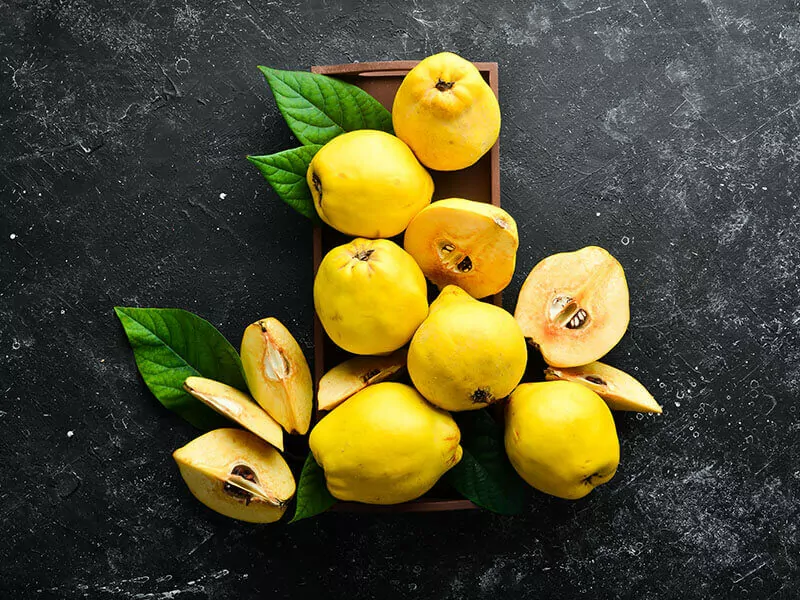
The history of quince is quite fascinating as it was found in the ancient Akkadian Empire (modern-day Iraq) and Judea (Israel). In Greece, quince was considered the sacred emblem of Aphrodite – the goddess of love, beauty, pleasure, passion, and procreation.
Raw quinces have a bitter and sour taste; however, they radiate a flowery, soothing aroma that many consider the “fragrance of Fall”. When cooked, quince will become even more aromatic. The sour note also weakens and is replaced with a subtle hint of sweetness.
In modern times, quinces are grown in continents with warm-temperate and temperate climates. They are often used to make jelly, juice, jam, wine, pudding, and marmalade. Additionally, quinces work exceptionally as a preservative.
Find out a way to add more flavor to this mouth-watering juice! You can see this video to know more:
Quandong
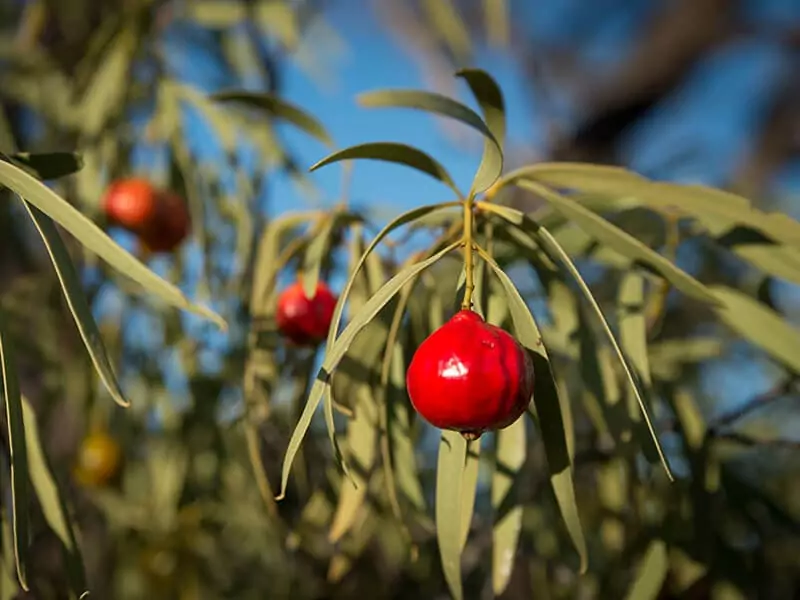
Next on the list is quandong – a popular Australian native bush food. Since it is packed full of vitamin C, quandong is often called “Aussie superfood”. This red berry-like fruit can be found growing wild in Australia’s semi-arid to arid areas and cultivated in New South Wales.
Although relatively big in size (about 0.8 inches in diameter), the quandong consists mainly of a large seed wrapped by a thin layer of sweet, slightly tangy flesh. This tasty fruit is widely consumed as pie fillings and can be made into quandong and chili dipping sauce.
Furthermore, this superfood is well-known for its nutritional values, with double the vitamin C found in 1 orange. Quandong can also be used in foot massage and help with curing toothache. In addition, quandong’s seed is a good source of essential oils.
Quararibea Cordata
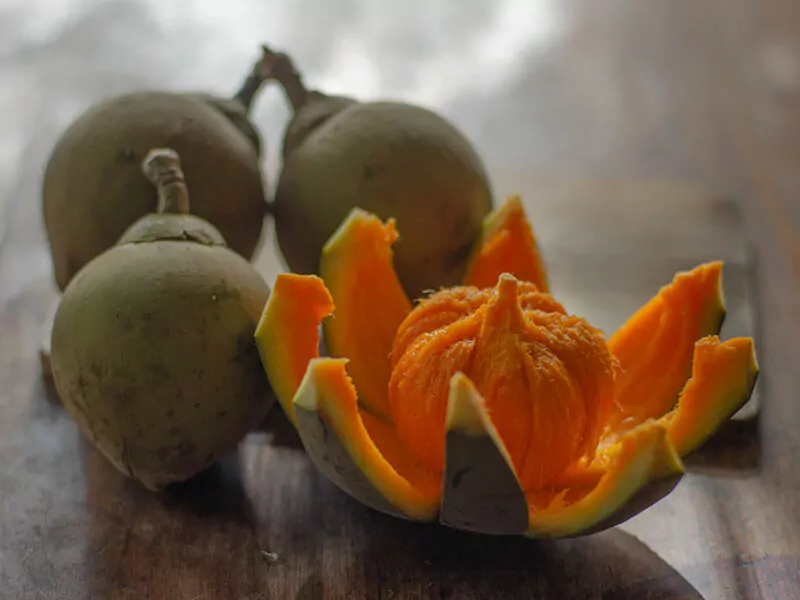
Also called the South American sapote or chupa-chupa, this Amazon rainforest native fruit might be a little tricky to find outside of its native habitat in Brazil, Colombia, Ecuador, and Peru.
Quararibea has a soft, fibrous texture with a juicy, sweet taste that resembles the taste of apricot and pumpkin. It is often peeled and eaten by hand, though sometimes you can find it in cocktail and juice form.
Fun fact: In 1964, US pomologist Bill Whitman received quararibea seeds from Peru and had successfully planted a tree in his garden located in Florida. Other than that, the exotic fruit has not received much recognition in the international market.
Queen Anne Cherry
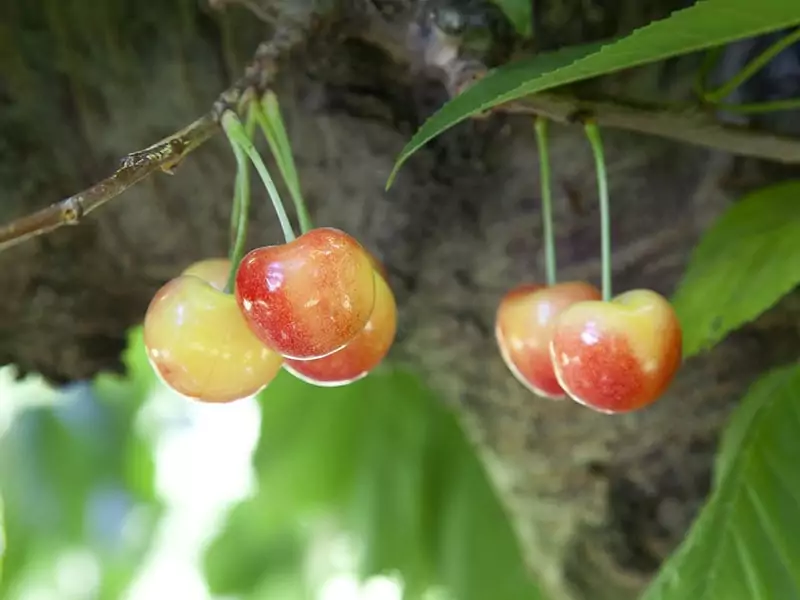
This royal-sounding kind of cherry first came to the United States in 1964 with the colonists and got its name from Seth Lewelling – a pioneer orchardist. Before that, this species of cherry was cultivated in Greece, the Roman Empire, England and was called the Napoleon cherry.
Queen Anne cherries are pretty similar to the Rainiers cherries in terms of taste and appearance. Thanks to its natural, delightful sweetness, Queen Anne cherry tastes exceptional on its own and can be made into jam, chocolate, or used as a kind of canned fruit.
In addition, it is also a good source of vitamins and antioxidants – substances that can prevent or slow down the damage caused to cells by free radicals.
Queen Tahiti Pineapple
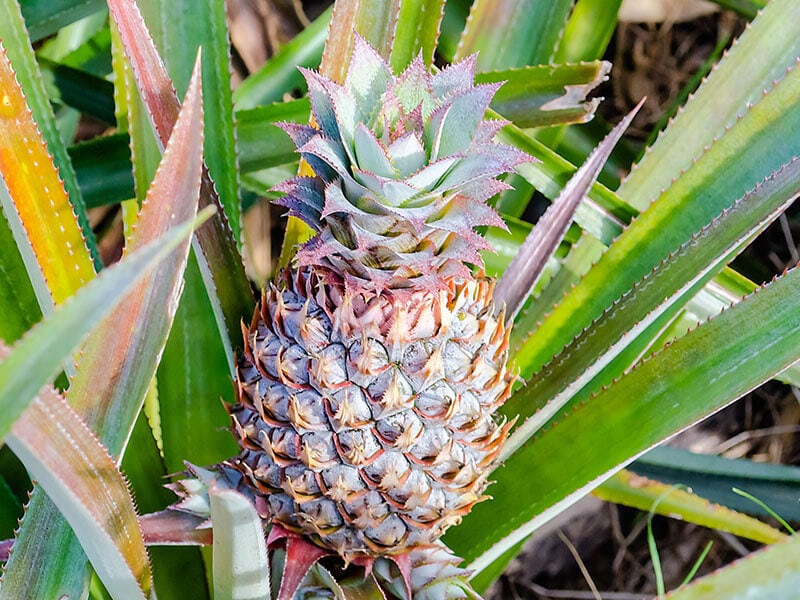
Speaking of fruits with a royal name, we still have a few more on the list, and Queen Tahiti pineapple is one of them. The Queen Tahiti or Painapo pineapple, as its name implies, is mainly grown and harvested in Moorea – an island northwest of Tahiti.
This pineapple has a distinctly long shape with golden, hexagonal rind and sharp, pointy leaves. The star of the show, though, is the luscious, highly aromatic flesh that is full of a rich and sweet flavor.
Thanks to its strong smell and taste, Queen Tahiti pineapple is an exceptional choice for both eating fresh, juicing, and winemaking. In addition, it is also commonly used in making salad dishes or grilled and paired with fish, meat, or rice.
A trip to the Hawaiian island will also show you how versatile pineapple can be when it comes to cooking ingredients. The wide range of delectable side dishes in Hawaii will certainly impress anyone, from a novice chef to a veteran connoisseur.
Fun fact: Every year, the people of Moorea island hold a pineapple festival to celebrate the Queen Tahiti pineapple as it is one of the most profitable sources of income for them.
Queen Apple
Next in the royal family is the Queen apple coming from New Zealand. Appeared in New Zealand in the early 1800s, Queen apple is well-known for its deep, crimson red, and naturally russeted skin.
Queen apple is born from cross-breeding the Royal Gala and Splendour genus. It tastes relatively sweet, juicy with some lingering hints of banana and pear. Top it up with a fruity, pleasant aroma and crunchy texture, and you now have an apple that everyone loves.
Thanks to its taste, queen apple is often eaten as it is or mixes with other fruits or vegetables to make salad dishes. It can also be juiced to create a healthy, rich in vitamin C, fiber, and potassium drink.
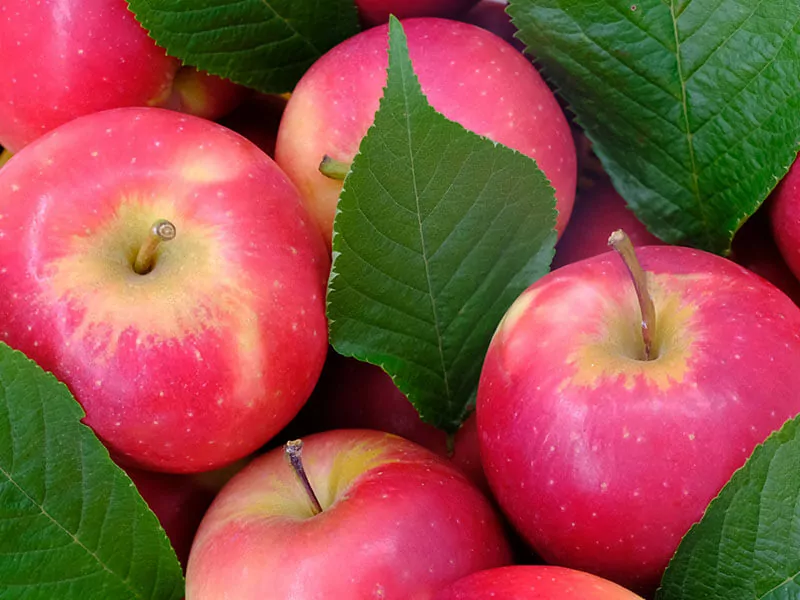
Queen Forelle Pear
You might have heard of this fruit by its simpler name Forelle. Queen Forelle pear is comparatively small in size with a thin, smooth outer layer that will turn blush red and golden when it’s ripe. Thus creating a brilliant contrast of rosy pink specks and bright yellow.
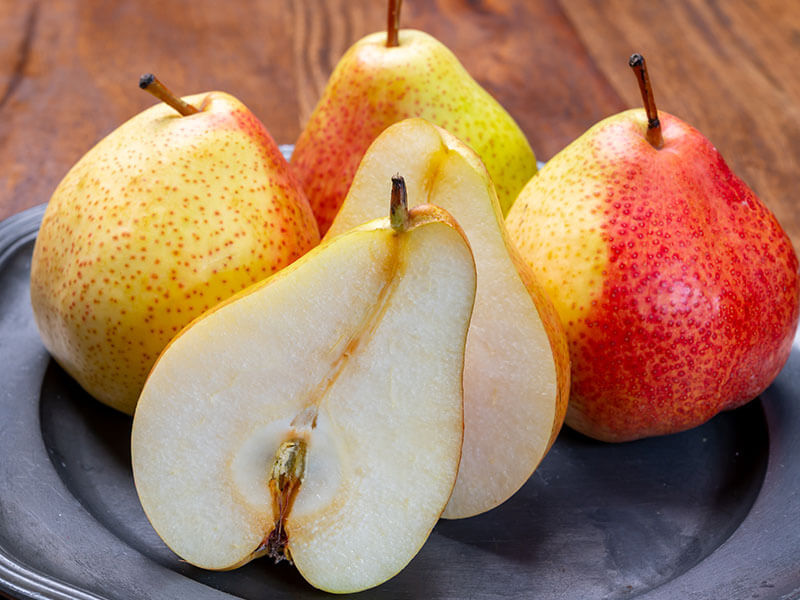
The inside pulp is moist, pleasantly sharp, mostly sweet but can be a little sour and has a firm, albeit coarse texture to it. Thanks to its small size, Queen Forelle pear is an excellent choice for a snack and can be paired with a variety of dishes to add more color and flavor.
Some of the treats that would happily welcome the appearance of Queen Forelle pear are winter salad, oatmeal, waffle, chocolate, Greek yogurt, chicken, sandwiches, and pork belly.
For fans of sweets, there are also many options for desserts made with pear that you might even feel overwhelmed at first glance. From luscious tart to delicious cake, pears can be added to almost anything.
Fun fact: In German, the name Forelle means trout, which possibly refers to the resemblance of the pear’s red lenticels and the red-ish color of a trout.
Quenepa
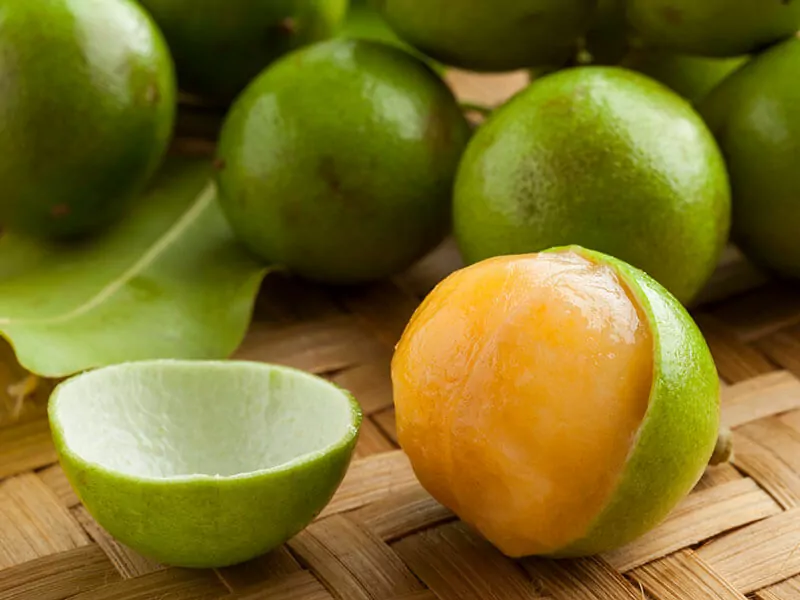
Another lesser known food starting with the letter “Q” is quenepa. Despite its unassuming look, quenepa is packed with calcium, thus being one of the few vegetables that can enhance bone strength.
Quenepa is commonly known as the Spanish lime or mamoncillo. This Caribbean-originated lime has a light sour taste that will gradually turn sweeter as it ripens, with moist and quite gooey pulp. All in all, quenepa can be described as a combination of lime and lychee.
Quenepa is often eaten fresh or canned and sometimes used in making alcoholic and soft drinks. You should be careful with its seed when eating, though, as it is a potential choking hazard.
This small lime can provide your body with a decent amount of vitamin A and C, along with iron, phosphorus, and fiber.
Learn how to eat quenepa safely and easily. You can see this video to know more:
Quinault Strawberry
Who doesn’t love strawberries, right? Do you know what’s even better than a normal strawberry? An everbearing strawberry! And that’s what Quinault strawberries are – a type of strawberry that can be harvested twice a year in Spring and Autumn.
With its outstanding size and soft, sweet taste, the Quinault strawberry can be enjoyed fresh or preserved. Moreover, this kind of strawberry is also an ideal choice for home gardeners as it’s quite easy to grow and best suited for the Pacific Northwest and the Midwest.
As an everbearing strawberry, the Quinault variety is an amazing addition to baking enthusiasts’ pantry. Many fancy and luxurious-looking desserts feature strawberries, and nothing is better than always having fresh ingredients on hand, right?
Quinoa
I know this might sound a little bit like cheating because quinoa is mainly known as a grain; however, because its leaves are also edible so technically, it can be considered a kind of vegetable!
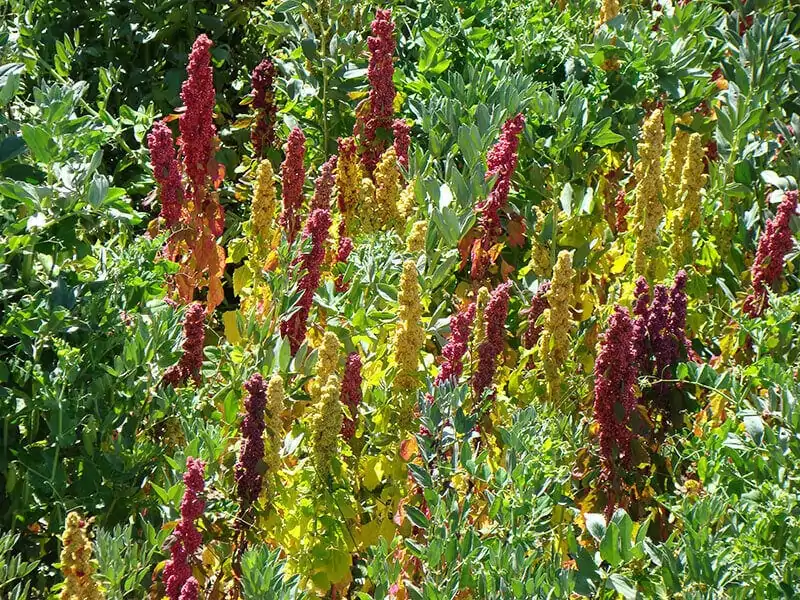
Quinoa was called the Mother Grain by the Incas people from the Inca Empire – the largest pre-Columbian America era. As its name implies, quinoa is rich in nutritional value with a considerably higher protein, lysine, and fiber content than most grains.
Quinoa leaves can be harvested and cooked similarly to spinach, while its seeds can be used in a variety of tasty recipes. Some examples of quinoa applications in cooking are: cinnamon-infused quinoa, veggie wrap, broccoli pesto quinoa salad.
Those in the health-aware communities probably also know that quinoa is a healthy and nutritious replacement for rice. Used for making fulfilling yet low calories like Mexican buddha bowls, quinoa will make a great addition to your diet.
Fun fact: The United Nations has declared 2013 “The International Year of Quinoa” in recognition of its past, present, and future contribution to food security in many parts of the world.
Querina Apple
Also called Florina, the Querina apple is a French domestic cultivar that combines the characteristics of Jonathan, Golden Delicious, and Rome apples. Its skin is a beautiful blend of purple-red and yellow shade.
Querina’s pulp tastes sweet with a slight hint of tart, and it’s quite juicy. Typically, this flavorful apple feels moderately firm while holding and has a crisp, crunchy texture. However, Querina apples can sometimes be a little tender, which is not to everyone’s liking.
This medium to large-sized apple is often eaten fresh or made into delicious apple ciders. Additionally, you can keep Querina apples for a fairly long time as they normally last about 3 months.
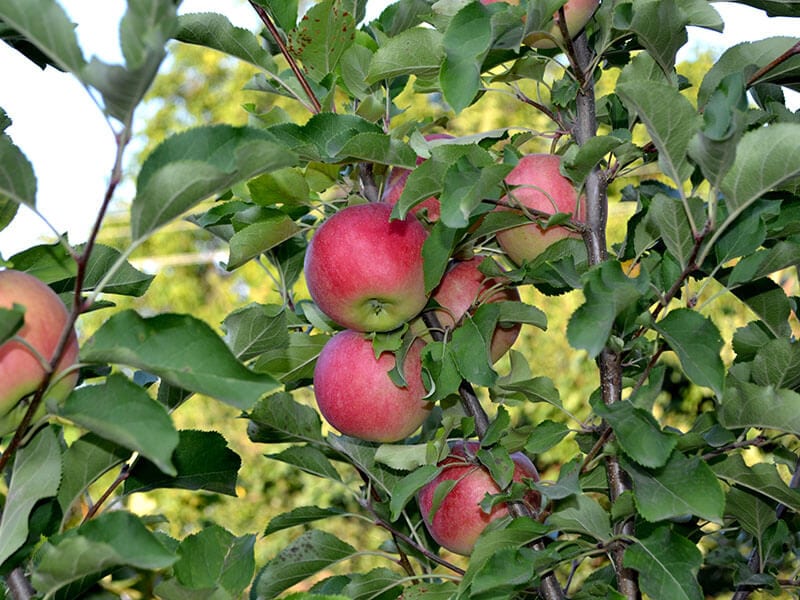
Ready To Show Off Your New Knowledge?
With this newfound knowledge, I’m sure that you will be able to impress your friends and families easily. Maybe set up a game to play at dinner and have a good laugh over some of these exciting fruits and vegetables?
Are there any fruits or vegetables you’d like to add? Feel free to comment down below. Also, don’t forget to like and share this article!

